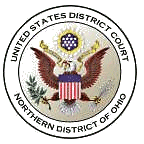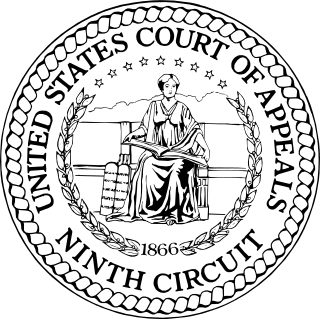Related Research Articles
Defamation is the oral or written communication of a false statement about another that unjustly harms their reputation and usually constitutes a tort or crime. In several countries, a true statement can also be considered defamation.

Hill v Church of Scientology of Toronto February 20, 1995- July 20, 1995. 2 S.C.R. 1130 was a libel case against the Church of Scientology, in which the Supreme Court of Canada interpreted Ontario's libel law in relation to the Canadian Charter of Rights and Freedoms.
Actual malice in United States law is a legal requirement imposed upon public officials or public figures when they file suit for libel. Compared to other individuals who are less well known to the general public, public officials and public figures are held to a higher standard for what they must prove before they may succeed in a defamation lawsuit.
New York Times Co. v. Sullivan, 376 U.S. 254 (1964), was a landmark decision of the U.S. Supreme Court ruling that the freedom of speech protections in the First Amendment to the U.S. Constitution restrict the ability of American public officials to sue for defamation. Specifically, it held that if a plaintiff in a defamation lawsuit is a public official or person running for public office, not only must they prove the normal elements of defamation—publication of a false defamatory statement to a third party—they must also prove that the statement was made with "actual malice", meaning that the defendant either knew the statement was false or recklessly disregarded whether or not it was true.
Gertz v. Robert Welch, Inc., 418 U.S. 323 (1974), was a landmark decision of the US Supreme Court establishing the standard of First Amendment protection against defamation claims brought by private individuals. The Court held that, so long as they do not impose liability without fault, states are free to establish their own standards of liability for defamatory statements made about private individuals. However, the Court also ruled that if the state standard is lower than actual malice, the standard applying to public figures, then only actual damages may be awarded.
In Australia, Torts are common law actions for civil wrongs. Unless barred by statute, individuals are entitled to sue other people, or the state; for the purpose of obtaining a legal remedy for the wrong committed.
Barrett v. Rosenthal, 40 Cal.4th 33 (2006), was a California Supreme Court case concerning online defamation. The case resolved a defamation claim brought by Stephen Barrett, Terry Polevoy, and attorney Christopher Grell against Ilena Rosenthal and several others. Barrett and others alleged that the defendants had republished libelous information about them on the internet. In a unanimous decision, the court held that Rosenthal was a "user of interactive computer services" and therefore immune from liability under Section 230 of the Communications Decency Act.
Fair comment is a legal term for a common law defense in defamation cases. It is referred to as honest comment in some countries.
A person who is found to have published a defamatory statement may evoke a defence of innocent dissemination, which absolves them of liability provided that they had no knowledge of the defamatory nature of the statement, and that their failure to detect the defamatory content was not due to negligence. The defence, sometimes also known as "mechanical distributor", is of concern to Internet Service Providers because of their potential liability for defamatory material posted by their subscribers.
Modern libel and slander laws in many countries are originally descended from English defamation law. The history of defamation law in England is somewhat obscure; civil actions for damages seem to have been relatively frequent as far back as the Statute of Gloucester in the reign of Edward I (1272–1307),. The law of libel emerged during the reign of James I (1603–1625) under Attorney General Edward Coke who started a series of libel prosecutions. Scholars frequently attribute strict English defamation law to James I's outlawing of duelling. From that time, both the criminal and civil remedies have been found in full operation.
The origins of the United States' defamation laws pre-date the American Revolution; one influential case in 1734 involved John Peter Zenger and established precedent that "The Truth" is an absolute defense against charges of libel. Though the First Amendment of the U.S. Constitution was designed to protect freedom of the press, for most of the history of the United States, the U.S. Supreme Court failed to use it to rule on libel cases. This left libel laws, based upon the traditional "Common Law" of defamation inherited from the English legal system, mixed across the states. The 1964 case New York Times Co. v. Sullivan, however, radically changed the nature of libel law in the United States by establishing that public officials could win a suit for libel only when they could prove the media outlet in question knew either that the information was wholly and patently false or that it was published "with reckless disregard of whether it was false or not". Later Supreme Court cases barred strict liability for libel and forbade libel claims for statements that are so ridiculous as to be obviously facetious. Recent cases have added precedent on defamation law and the Internet.
The following outline is provided as an overview of and introduction to tort law in common law jurisdictions:
Adam v. Ward was a 1919 House of Lords case concerning the legal theories of qualified privilege and that of the constitutional defence. Qualified privilege is "a defence to the publication of defamatory statements which may be false but which warrant protection from an action in defamation because the occasion on which they are made demands that they be made freely with the prospect of litigation removed." The constitutional defence varies from country to country in that it is based on the constitutional law of said country.
Goldwater v. Ginzburg was a 1969 United States court ruling on defamation.

Smith v. Summit Entertainment LLC, No. 3:11-cv-00348, was a case heard by the United States District Court for the Northern District of Ohio, in which professional singer Matthew Smith, known as Matt Heart, sued Summit Entertainment. Smith asserted seven causes of action for Summit Entertainment's wrongful use of copyright takedown notice on the website YouTube, among which three were dismissed and four were ruled in Smith's favor. The case is noteworthy given that copyright 17 U.S.C. § 512 claims are hard to win, and the plaintiff's success was due to the combination of his persuasive story and convincing additional claims which complemented § 512.

Obsidian Finance Group, LLC v. Cox is a 2011 case from the United States District Court for the District of Oregon concerning online defamation. Plaintiffs Obsidian Finance Group and its co-founder Kevin Padrick sued Crystal Cox for maintaining several blogs that accused Obsidian and Padrick of corrupt and fraudulent conduct. The court dismissed most of Cox's blog posts as opinion, but found one single post to be more factual in its assertions and therefore defamatory. For that post, the court awarded the plaintiffs $2.5 million in damages. This case is notable for the court's ruling that Cox, as an internet blogger, was not a journalist and was thus not protected by Oregon's media shield laws, although the court later clarified that its ruling did not categorically exclude blogs from being considered media and indicated that its decision was based in part upon Cox offering to remove negative posts for a $2,500 fee. In January 2014 the Ninth Circuit Court affirmed in part and reversed in part the district court's judgment awarding compensatory damages to the bankruptcy trustee. It also ordered a new trial on the blog post at issue.
Harte-Hanks Communications Inc. v. Connaughton, 491 U.S. 657 (1989), was a case in which the Supreme Court of the United States supplied an additional journalistic behavior that constitutes actual malice as first discussed in New York Times Co. v. Sullivan (1964). In the case, the Court held that departure from responsible reporting and unreasonable reporting conduct alone were not sufficient to award a public figure damages in a libel case. However, the Court also ruled that if reporters wrote with reckless disregard for the truth, which included ignoring obvious sources for their report, plaintiffs could be awarded compensatory damages on the grounds of actual malice.

College Network, Inc. v. Moore Educational Publishers, Inc., No. 09-50596 was an unpublished appellate level case in the Fifth Circuit that upheld a district court jury decision to dismiss the purchase of trademarked keywords as infringing. The original suit was brought on a claim of trademark infringement in the purchase of certain advertising keywords that the defendant countered with claims of defamation and tortious interference, also known as intentional interference with contractual relations. The main issue addressed in the appeal was the sufficiency of the evidence presented in the counterclaims of the defendant. The court upheld the lower court's ruling, but vacated the award for tortious interference.

Hay v Chalmers [1991] 3 NZBLC 102,000 was a New Zealand case in which a mechanic made defamatory comments about the plaintiff, and instead of taking defamation action in the courts, a costly and complex action, instead sought compensation instead for misleading conduct under section 9 of the Fair Trading Act 1986, where there are few legal defences.

Lorraine Martin v. Hearst Corporation was a defamation case in the United States Court of Appeals for the Second Circuit protecting online news sources from having to remove or modify a story chronicling a person's arrest if that arrest is later erased from the record by the government using a criminal erasure statute.
References
- ↑ Kolegas v. Heftel Broadcasting Corp., 607N.E.2d201 , 206( Ill. 1992).
- ↑ “[D]efamation per se is distinguished from defamation because in the former, ‘a plaintiff can establish liability without a showing of special or pecuniary damages because those damages are presumed.’” Ira Green, Inc. v. Mil. Sales & Serv. Co., No. CV 10-207-M, 2014 WL 12782199, at *6 (D.R.I. Jan. 15, 2014). Citation taken from Flynn v. Cable News Network, Memorandum Opinion & Order, page 9 (16 December, 2021).